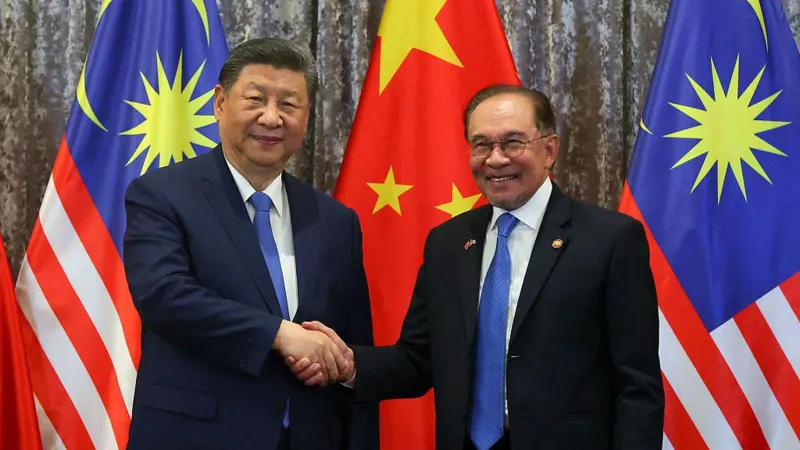NEWS
Trump’s tariffs leave China’s neighbours with an impossible choice.

Trump’s tariffs leave China’s neighbours with an impossible choice.
When US President Donald Trump hit China with tariffs in his first term, Vietnamese entrepreneur Hao Le saw an opportunity.
His company is one of hundreds of businesses that have emerged to compete with Chinese exports that have increasingly been facing restrictions from the West.
Le’s SHDC Electronics, which sits in the budding industrial hub of Hai Duong, sells $2m (£1.5m) worth of phone and computer accessories every month to the United States.
But that revenue could dry up if Trump imposes 46% tariffs on Vietnamese goods, a plan that is currently on hold until early July. That would be “catastrophic for our business,” Le says.
And selling to Vietnamese consumers is not an option, he adds: “We cannot compete with Chinese products. This is not just our challenge. Many Vietnamese companies are struggling in their own home market.”
Trump tariffs in 2016 sent a glut of cheap Chinese imports, originally intended for the US, into South East Asia, hurting many local manufacturers. But they also opened new doors for other businesses, often into global supply chains that wanted to cut their dependence on China.
But Trump 2.0 threaten to shut those doors, which it sees as an unacceptable loophole. And that’s a blow for fast-growing economies like Vietnam and Indonesia that are gunning to be key players in industries from chips to electric vehicles.
They also find themselves stuck between the world’s two biggest economies – China, a powerful neighbour and their biggest trading partner, and the US, a key export market, which could be looking to strike a deal at Beijing’s expense.
And so Xi Jinping’s long-planned trip to Vietnam, Malaysia and Cambodia this week took on fresh urgency.
All three countries rolled out the the red carpet for him, but Trump saw it as more evidence of them conspiring to “screw” the US.
The White House will use its upcoming negotiations with smaller nations to pressure them into limiting their dealings with Beijing, according to reports.
But that could be a fanciful ambition given the amount of money flowing between China and South East Asia.
In 2024, China earned a record $3.5tn from exports – 16% of those went to South East Asia, its biggest market. Beijing, in turn, has paid for railways in Vietnam, dams in Cambodia and ports in Malaysia as part of its “Belt and Road” infratructure programme that seeks to boost ties abroad.
“We can’t choose, and we will never choose [between China and the US],” Malaysia’s trade minister Tengku Zafrul Aziz told the BBC on Tuesday, ahead of Xi’s visit.
“If the issue is about something that we feel is against our interest, then we will protect












![Trump’s current Chief of Staff Susie Wiles on the Trump admin: —Trump “has an alcoholic’s personality.” —Vance has been “a conspiracy theorist for a decade.” —Musk is “an avowed ketamine [user].” —Vought is “a right-wing absolute zealot.” —Bondi “completely whiffed” the Epstein Files.](https://usafly24.com/wp-content/uploads/2025/12/1765895857777-80x80.jpeg)